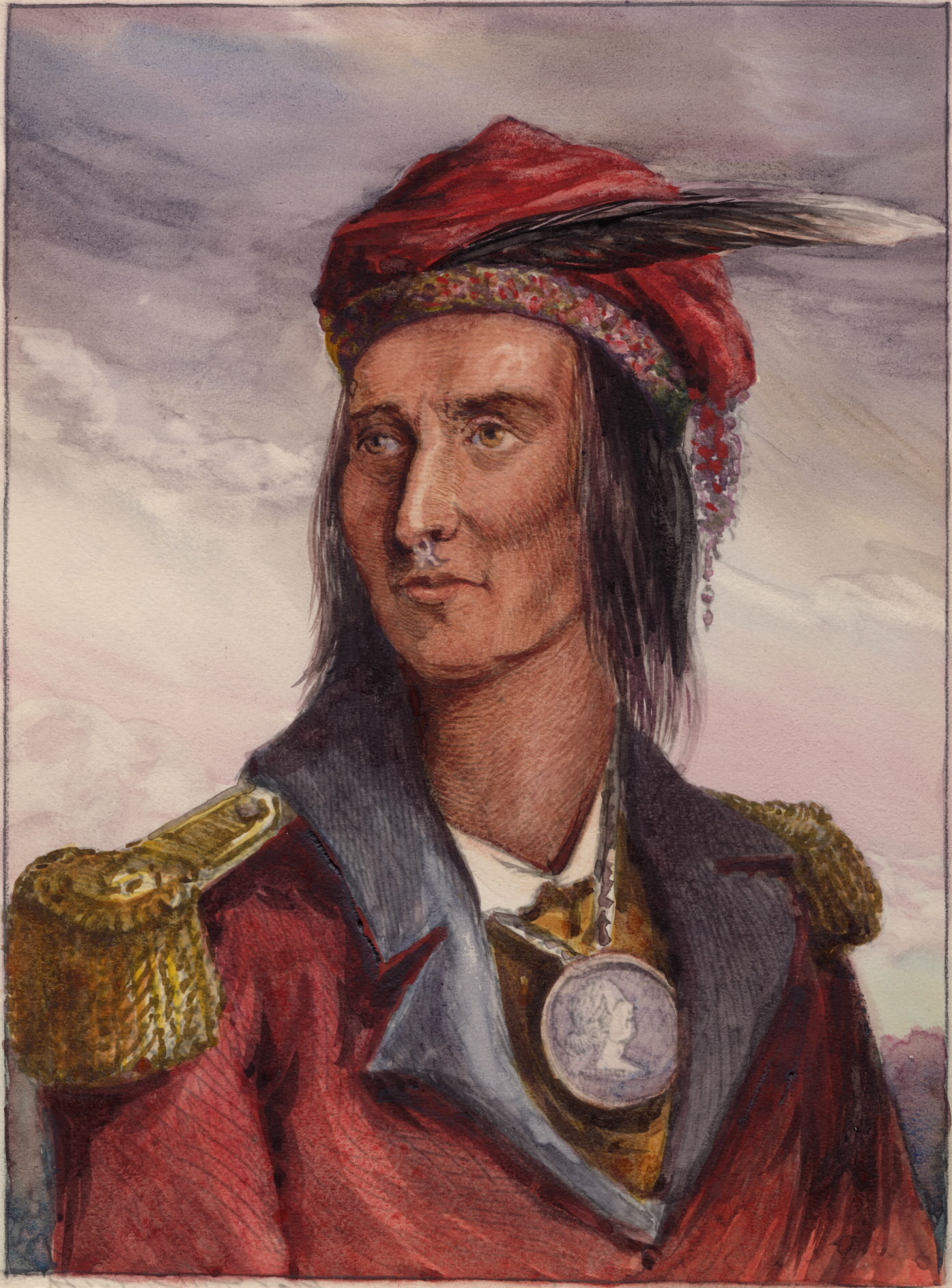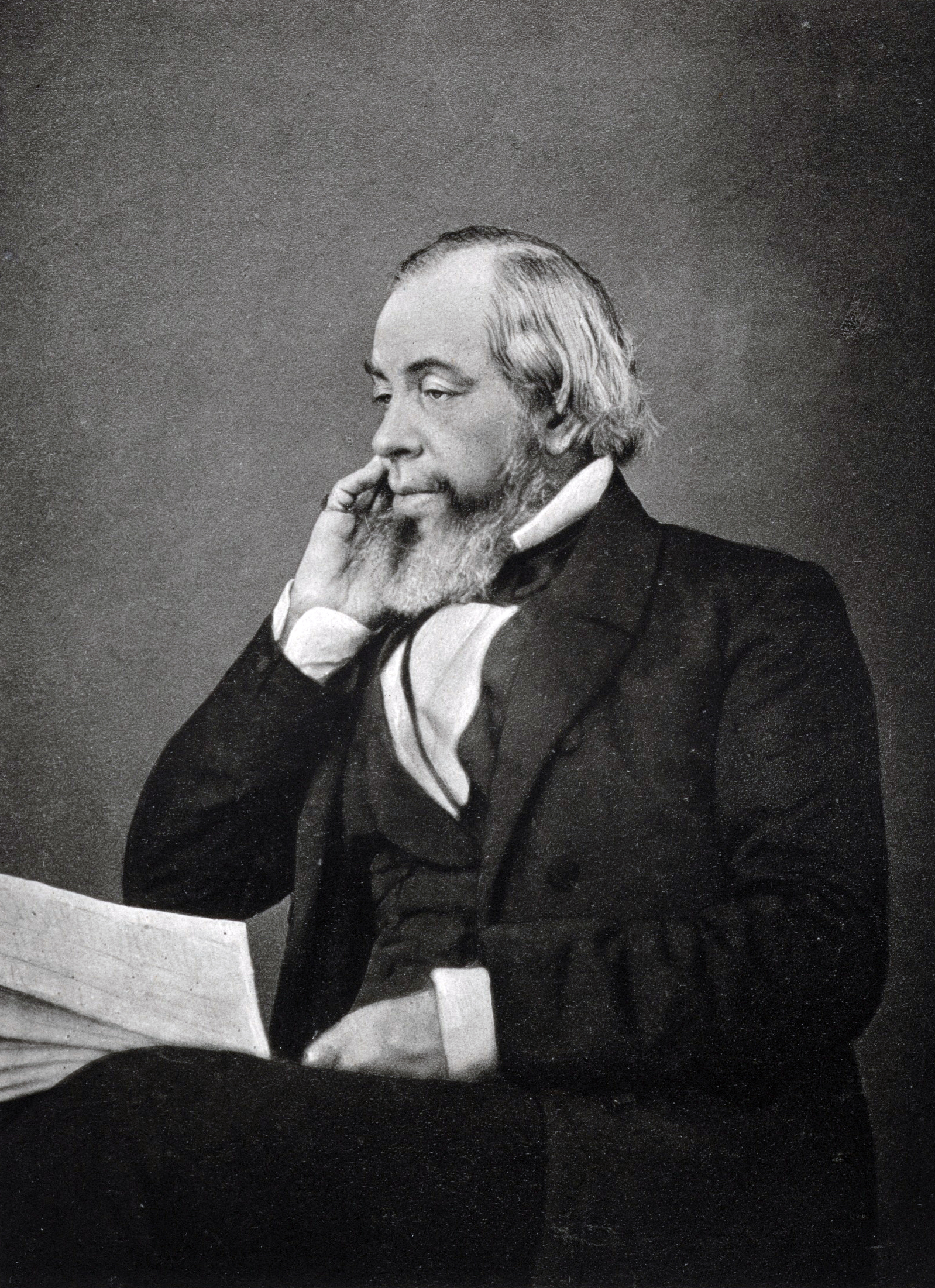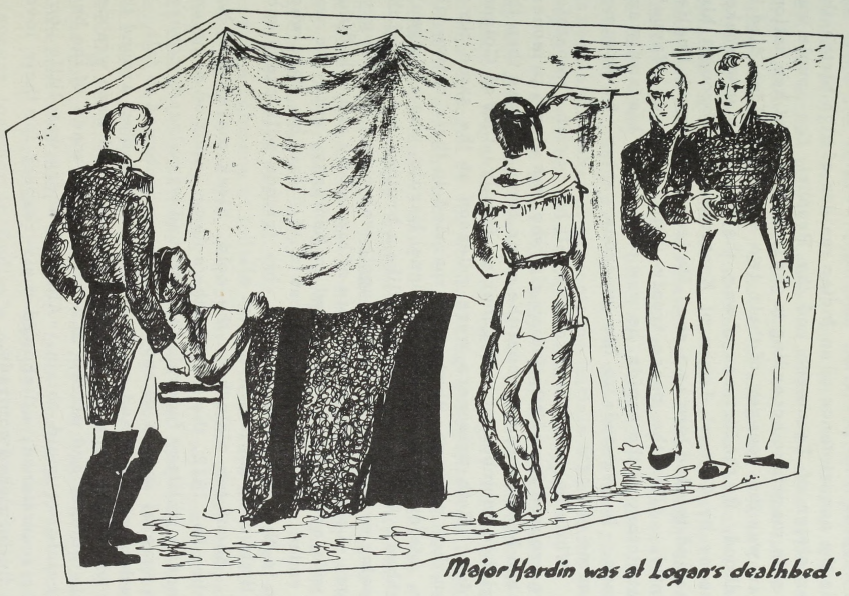|
Tecumseh02
Tecumseh ( ; October 5, 1813) was a Shawnee chief and warrior who promoted resistance to the expansion of the United States onto Native American lands. A persuasive orator, Tecumseh traveled widely, forming a Native American confederacy and promoting intertribal unity. Even though his efforts to unite Native Americans ended with his death in the War of 1812, he became an iconic folk hero in American, Indigenous, and Canadian popular history. Tecumseh was born in what is now Ohio, at a time when the far-flung Shawnees were reuniting in their Ohio Country homeland. During his childhood, the Shawnees lost territory to the expanding American colonies in a series of border conflicts. Tecumseh's father was killed in battle against American colonists in 1774. Tecumseh was thereafter mentored by his older brother Cheeseekau, a noted war chief who died fighting Americans in 1792. As a young war leader, Tecumseh joined Shawnee Chief Blue Jacket's armed struggle against further Amer ... [...More Info...] [...Related Items...] OR: [Wikipedia] [Google] [Baidu] |
Tecumseh's Confederacy
Tecumseh's confederacy was a confederation of native Americans in the Great Lakes region of the United States that began to form in the early 19th century around the teaching of Tenskwatawa (The Prophet).See , pg. 211. The confederation grew over several years and came to include several thousand warriors. Shawnee leader Tecumseh, the brother of The Prophet, developed into the leader of the group as early as 1808. Together, they worked to unite the various tribes against the European settlers coming across the Appalachian Mountains and onto their land. In November 1811, an American military force under the leadership of William Henry Harrison engaged warriors associated with Tenskwatawa in the Battle of Tippecanoe. Under Tecumseh's leadership, the confederation then went to war with the United States during Tecumseh's War and the War of 1812. However, the confederation fell apart in 1813 following his death at the Battle of the Thames. Formation Following the 1795 Treaty of Gree ... [...More Info...] [...Related Items...] OR: [Wikipedia] [Google] [Baidu] |
William Henry Harrison
William Henry Harrison (February 9, 1773April 4, 1841) was an American military officer and politician who served as the ninth president of the United States. Harrison died just 31 days after his inauguration in 1841, and had the shortest presidency in United States history. He was also the first United States president to die in office, and a brief constitutional crisis resulted as presidential succession was not then fully defined in the United States Constitution. Harrison was the last president born as a British subject in the Thirteen Colonies and was the paternal grandfather of Benjamin Harrison, the 23rd president of the United States. He was born into the Harrison family of Virginia at their homestead, Berkeley plantation in Charles City County, Virginia; he was a son of Benjamin Harrison V—a Founding Father of the United States. During his early military career, Harrison participated in the 1794 Battle of Fallen Timbers, an American military victory that ended the N ... [...More Info...] [...Related Items...] OR: [Wikipedia] [Google] [Baidu] |
Battle Of Tippecanoe
The Battle of Tippecanoe ( ) was fought on November 7, 1811, in Battle Ground, Indiana, between American forces led by then Governor William Henry Harrison of the Indiana Territory and Native American forces associated with Shawnee leader Tecumseh and his brother Tenskwatawa (commonly known as "The Prophet"), leaders of a confederacy of various tribes who opposed European-American settlement of the American frontier. As tensions and violence increased, Governor Harrison marched with an army of about 1,000 men to attack the confederacy's headquarters at Prophetstown, near the confluence of the Tippecanoe River and the Wabash River. Tecumseh was not yet ready to oppose the United States by force and was away recruiting allies when Harrison's army arrived. Tenskwatawa was a spiritual leader but not a military man, and he was in charge. Harrison camped near Prophetstown on November 6 and arranged to meet with Tenskwatawa the following day. Early the next morning warriors from Proph ... [...More Info...] [...Related Items...] OR: [Wikipedia] [Google] [Baidu] |
Battle Of The Thames
The Battle of the Thames , also known as the Battle of Moraviantown, was an American victory in the War of 1812 against Tecumseh's Confederacy and their British allies. It took place on October 5, 1813, in Upper Canada, near Chatham. The British lost control of Southwestern Ontario as a result of the battle; Tecumseh was killed, and his confederacy largely fell apart. British troops under Major General Henry Procter had occupied Detroit until the United States Navy gained control of Lake Erie, cutting them off from their supplies. Procter was forced to retreat north up the Thames River to Moraviantown, followed by the tribal confederacy under Shawnee leader Tecumseh who were his allies. American infantry and cavalry under Major General William Henry Harrison drove off the British and then defeated the Indigenous peoples, who were demoralized by the death of Tecumseh in action. American control was re-established in the Detroit area, the tribal confederacy collapsed, and Procter w ... [...More Info...] [...Related Items...] OR: [Wikipedia] [Google] [Baidu] |
Shawnee
The Shawnee are an Algonquian-speaking indigenous people of the Northeastern Woodlands. In the 17th century they lived in Pennsylvania, and in the 18th century they were in Pennsylvania, Ohio, Indiana and Illinois, with some bands in Kentucky and Alabama. By the 19th century, they were forcibly removed to Missouri, Kansas, Texas, and ultimately Indian Territory, which became Oklahoma under the 1830 Indian Removal Act. Today, Shawnee people are enrolled in three federally recognized tribes, all headquartered in Oklahoma: the Absentee-Shawnee Tribe of Indians, Eastern Shawnee Tribe of Oklahoma, and Shawnee Tribe. Etymology Shawnee has also been written as Shaawanwaki, Ša·wano·ki, Shaawanowi lenaweeki, and Shawano. Algonquian languages have words similar to the archaic ''shawano'' (now: ''shaawanwa'') meaning "south". However, the stem ''šawa-'' does not mean "south" in Shawnee, but "moderate, warm (of weather)": See Charles F. Voegelin, "šawa (plus -ni, -te) MODERATE, WARM ... [...More Info...] [...Related Items...] OR: [Wikipedia] [Google] [Baidu] |
Shawnee Towns In Ohio To 1808
The Shawnee are an Algonquian languages, Algonquian-speaking indigenous people of the Northeastern Woodlands. In the 17th century they lived in Pennsylvania, and in the 18th century they were in Pennsylvania, Ohio, Indiana and Illinois, with some bands in Kentucky and Alabama. By the 19th century, they were forcibly removed to Missouri, Kansas, Texas, and ultimately Indian Territory, which became Oklahoma under the 1830 Indian Removal Act. Today, Shawnee people are enrolled in three federally recognized tribes, all headquartered in Oklahoma: the Absentee Shawnee Tribe of Indians, Absentee-Shawnee Tribe of Indians, Eastern Shawnee Tribe of Oklahoma, and Shawnee Tribe. Etymology Shawnee has also been written as Shaawanwaki, Ša·wano·ki, Shaawanowi lenaweeki, and Shawano. Algonquian languages have words similar to the archaic ''shawano'' (now: ''shaawanwa'') meaning "south". However, the stem ''šawa-'' does not mean "south" in Shawnee, but "moderate, warm (of weather)": See Cha ... [...More Info...] [...Related Items...] OR: [Wikipedia] [Google] [Baidu] |
Native Americans In The United States
Native Americans, also known as American Indians, First Americans, Indigenous Americans, and other terms, are the Indigenous peoples of the mainland United States ( Indigenous peoples of Hawaii, Alaska and territories of the United States are generally known by other terms). There are 574 federally recognized tribes living within the US, about half of which are associated with Indian reservations. As defined by the United States Census, "Native Americans" are Indigenous tribes that are originally from the contiguous United States, along with Alaska Natives. Indigenous peoples of the United States who are not listed as American Indian or Alaska Native include Native Hawaiians, Samoan Americans, and the Chamorro people. The US Census groups these peoples as " Native Hawaiian and other Pacific Islanders". European colonization of the Americas, which began in 1492, resulted in a precipitous decline in Native American population because of new diseases, wars, ethni ... [...More Info...] [...Related Items...] OR: [Wikipedia] [Google] [Baidu] |
Benson John Lossing
Benson John Lossing (February 12, 1813 – June 3, 1891) was a prolific and popular American historian, known best for his illustrated books on the American Revolution and American Civil War and features in ''Harper's Magazine''. He was a charter trustee of Vassar College. Early life Lossing was born February 12, 1813 in Beekman, New York. His father John was descended of old Dutch stock, originally surnamed Lassing or Lassingh, who had been among the earliest settlers of the Hudson Valley. His mother, Miriam Dorland Lossing was a Quakers, Quaker. His formal education was curtailed when he was orphaned in 1824. Soon thereafter, he moved to Poughkeepsie (town), New York, Poughkeepsie to serve as apprentice to Adam Henderson, clock and watchmaker and silversmith. During his apprenticeship he read a number of history books, and over a period of several years pursued an independent study.''American Authors 1600-1900'', 1938 He became interested in history after reading Edward ... [...More Info...] [...Related Items...] OR: [Wikipedia] [Google] [Baidu] |
Siege Of Detroit
The siege of Detroit, also known as the surrender of Detroit or the Battle of Fort Detroit, was an early engagement in the War of 1812. A British force under Major General Isaac Brock with Native American allies under Shawnee leader Tecumseh used bluff and deception to intimidate U.S. Brigadier General William Hull into surrendering the fort and town of Detroit, Michigan, along with his dispirited army which actually outnumbered the victorious British and Indians (the first nations of then to become Canada). The British victory reinvigorated the militia and civil authorities of Upper Canada, who had previously been pessimistic and affected by pro-U.S. agitators. Many Indians in the Northwest Territory were inspired to take arms against U.S. outposts and settlers. The British held Detroit for more than a year before their small fleet was defeated on Lake Erie, which forced them to abandon the western frontier of Upper Canada. Background American plans and moves Tension was ... [...More Info...] [...Related Items...] OR: [Wikipedia] [Google] [Baidu] |
Voiceless Interdental Fricative
The voiceless dental non-sibilant fricative is a type of consonantal sound used in some spoken languages. It is familiar to English speakers as the 'th' in ''think''. Though rather rare as a phoneme in the world's inventory of languages, it is encountered in some of the most widespread and influential (see below). The symbol in the International Phonetic Alphabet that represents this sound is , and the equivalent X-SAMPA symbol is T. The IPA symbol is the Greek letter theta, which is used for this sound in post-classical Greek, and the sound is thus often referred to as "theta". The dental non-sibilant fricatives are often called "interdental" because they are often produced with the tongue between the upper and lower teeth, and not just against the back of the upper or lower teeth, as they are with other dental consonants. This sound and its voiced counterpart are rare phonemes, occurring in 4% of languages in a phonological analysis of 2,155 languages. Among the more than 60 ... [...More Info...] [...Related Items...] OR: [Wikipedia] [Google] [Baidu] |
Captain Logan
Captain Logan ( 1776 – November 25, 1812), also known as Spemica Lawba ("High Horn"), James Logan, or simply Logan, was a Shawnee warrior who lived in what became the U.S. state of Ohio. Although he opposed the expansion of the United States into Shawnee lands, after the Treaty of Greenville (1795), he was one of many Shawnees who sought to preserve Shawnee independence by maintaining peaceful relations with the United States. When the War of 1812 came to Ohio, Logan served as a scout and guide for the Americans. After he was killed in a skirmish with British-allied Natives, he was buried with military honors by the Americans, becoming "the foremost Indian hero on the American side of that conflict." Background and early life Logan was born Spemica Lawba ("High Horn") in the Ohio Country. His birth name has also been spelled "Spemicalawba," "Spamagelabe," and "Spemeaalapah." He belonged to the Mekoche division of the Shawnee tribe. As a young man, he was friends with Tecumse ... [...More Info...] [...Related Items...] OR: [Wikipedia] [Google] [Baidu] |
Prophetstown State Park
Prophetstown State Park commemorates a Native American village founded in 1808 by Shawnee leaders Tecumseh and his brother Tenskwatawa north of present-day Lafayette, Indiana, which grew into a large, multi-tribal community. The park features an open-air museum at Prophetstown, with living history exhibits including a Shawnee village and a 1920s-era farmstead. Battle Ground, Indiana, is a village about a mile east of the site of the Battle of Tippecanoe in 1811, a crucial battle in Tecumseh's War which ultimately led to the demise of Prophetstown. The state park was established in 2004 and receives about 335,000 visitors annually. History The park was first proposed in 1989 but did not receive funding from the Indiana legislature until 1994. Land acquisition continued through 1999 when the legislature funded $3.7 million to create the park. Indiana Governor Joe Kernan Joe Kernan or Joseph Kernan may refer to: * Joe Kernan (baseball), 19th-century American baseball player * Joe ... [...More Info...] [...Related Items...] OR: [Wikipedia] [Google] [Baidu] |











